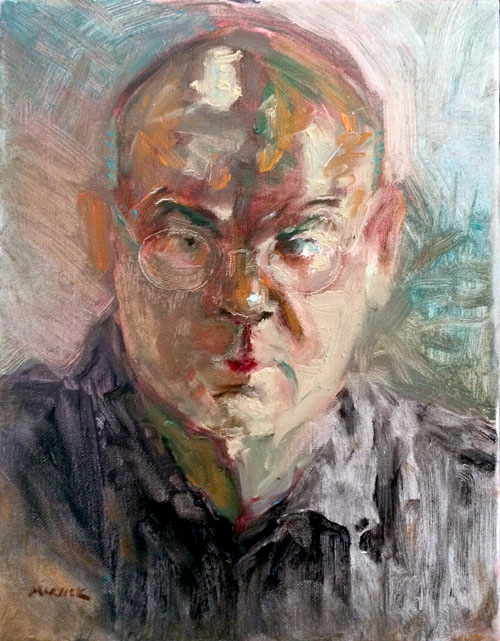The Dissolution of Identity in the 20th and 21st Century Art
Published: January 30, 2017 | Author: Lucas Wentz | Read Time: 1 minute
 On Thursday, February 2nd at 11:30 a.m. Dr. Andrew Marvick will be delivering Southern Utah University’s annual Distinguished Faculty Lecture which he has entitled, “Un-Selfies: The Dissolution of Identity in 20th and 21st Century Art,” in the Gilbert Great Hall of SUU’s Hunter Conference Center. His presentation will be followed by a Q&A, moderated by Dr. Lynn Vartan, and a meet and greet.
On Thursday, February 2nd at 11:30 a.m. Dr. Andrew Marvick will be delivering Southern Utah University’s annual Distinguished Faculty Lecture which he has entitled, “Un-Selfies: The Dissolution of Identity in 20th and 21st Century Art,” in the Gilbert Great Hall of SUU’s Hunter Conference Center. His presentation will be followed by a Q&A, moderated by Dr. Lynn Vartan, and a meet and greet.
Dr. Marvick’s talk will trace the development of what he calls the “un-selfie”—the oxymoron of the faceless portrait—in modern and post-modern art, from its beginnings at the end of the 19th century to its current appearance in the “selfie culture” of our time, where it acts less within the public sector of social media and popular entertainment, and more in the context of the contemporary art scene. Artists to be considered include Paul Cézanne, Pablo Picasso and Henri Matisse, as well as favorites of the current art scene—Cindy Sherman, Banksy and Dennis Leigh.
Dr. Marvick is an art historian and a painter—for him, the two roles are inseparable. He grew up in Los Angeles, but spent long periods in West Africa, England, France, Germany, Austria and Italy. He received his BA from Harvard University, his MA from UCLA and his PhD from Columbia University in New York; and he followed a course of training at the Academia N. Simi in Florence, where in 1978 he received his Credenziale.
The Distinguished Faculty Lecture is selected each year by a Faculty Senate Committee. The Tanner Center seeks to promote access to scholarly and scientific learning in all areas of human values which embrace moral, artistic, intellectual, and spiritual concepts. This event is free and open to the public.
Contact Information:
435-586-5400
Contact the Office of Marketing Communication
This article was published more than 3 years ago and might contain outdated information or broken links. As a result, its accuracy cannot be guaranteed.

